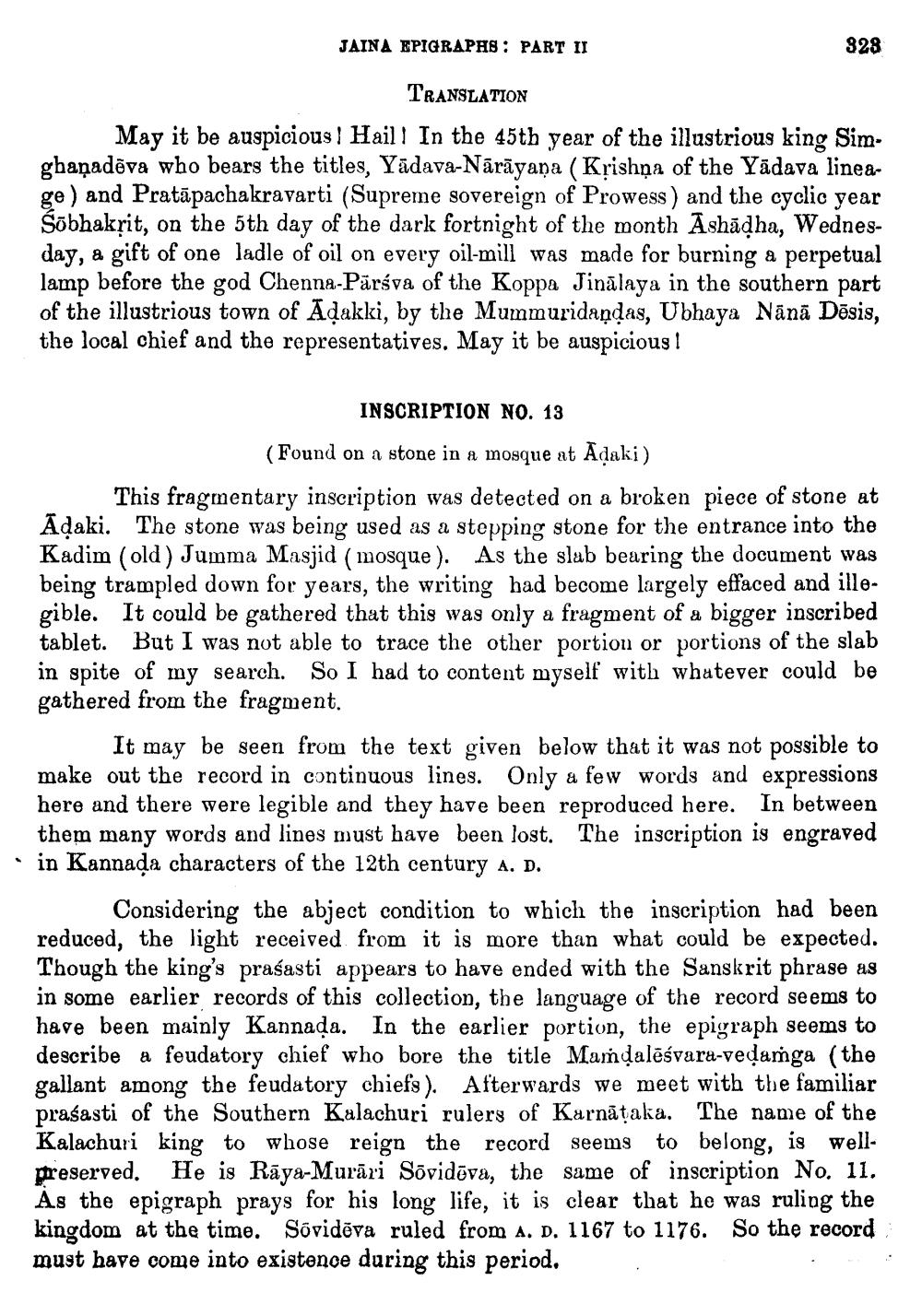________________
JAINA EPIGRAPHS: PART II
328
TRANSLATION
May it be auspicious! Hail! In the 45th year of the illustrious king Sim. gbañadēva who bears the titles, Yādava-Nārāyana ( Krishna of the Yādava lineage) and Pratāpachakravarti (Supreme sovereign of Prowess) and the cyclic year Sõbhakrit, on the 5th day of the dark fortnight of the month Āshādha, Wednesday, a gift of one ladle of oil on every oil-mill was made for burning a perpetual lamp before the god Chenna-Päráva of the Koppa Jinālaya in the southern part of the illustrious town of Adakki, by the Mummuridaņdas, Ubhaya Nānā Dēsis, the local chief and the representatives. May it be auspicious!
INSCRIPTION NO. 13
(Found on a stone in a mosque at Ādaki) This fragmentary inscription was detected on a broken piece of stone at Ādaki. The stone was being used as a stepping stone for the entrance into the Kadim (old) Jumma Masjid ( mosque). As the slab bearing the document was being trampled down for years, the writing had become largely effaced and illegible. It could be gathered that this was only a fragment of a bigger inscribed tablet. But I was not able to trace the other portion or portions of the slab in spite of my search. So I had to content myself with whatever could be gathered from the fragment.
It may be seen from the text given below that it was not possible to make out the record in continuous lines. Only a few words and expressions here and there were legible and they have been reproduced here. In between them many words and lines must have been lost. The inscription is engraved in Kannada characters of the 12th century A. D.
Considering the abject condition to which the inscription had been reduced, the light received from it is more than what could be expected. Though the king's praśasti appears to have ended with the Sanskrit phrase as in some earlier records of this collection, the language of the record seems to have been mainly Kannada. In the earlier portion, the epigraph seems to describe a feudatory chief who bore the title Mamdalēśvara-vedamga (the gallant among the feudatory chiefs). Afterwards we meet with the familiar praśasti of the Southern Kalachuri rulers of Karnātaka. The name of the Kalachuri king to whose reign the record seems to belong, is wellpreserved. He is Rāya-Murāri Sõvidēva, the same of inscription No. 11. As the epigraph prays for his long life, it is clear that he was ruling the kingdom at the time. Sõvidēva ruled from a. D. 1167 to 1176. So the record must have come into existence during this period.




